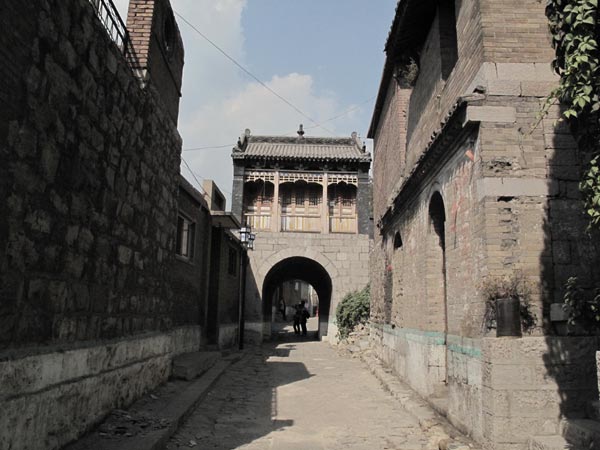

The barracks are designed in a symmetrical format around the 5-meter-wide slate path with a gray brick one-story yard located on both sides. Unlike similar civilian houses, the barrack houses have flat roofs, which can be used as platforms for sentries and street battles.
An 800-year-old pagoda tree stands in the center of the barrack. Villagers have tied red cloth and silk ribbons to the tree for good luck.
There are about 100 families now living in the old barracks. Most young people go to work in the cities as migrant workers, leaving the old villagers and children at home to eke out a living from tourism.
Others have left the village to settle in dozens of natural villages in the mountains along the river valley behind the pass.
Local mountains boast hundreds of springs that nurtured the settlers, cattle and agriculture with stable water supplies at a constant temperature of 18 C throughout the year.
The villagers built a canal network across their residential area, making the village look like a smaller Venice in the mountains-a rare scene in the country's drought-prone northern regions.
The villagers built water mills over the canal and the grindery business had prospered for hundreds of years until the mid-1980s when the springwater flow lessened.
Together with a decline of the mills are several small hydropower stations constructed in the 1950s over the main waterfalls on the cliff over the Mianhe River.
Miao Ruimin, a 60-year-old villager who operates the only water mill in Princess Pass village, says he learned how to operate the mill from his father in 1983. He now runs the mill purely as a tourist attraction.
He also runs a family inn out of his ancestral yard, which was built on a section of a springwater creek.
"Tourism makes more money than milling grain or making incense powders (a local specialty made from wood)," he says. "None of my children would like to learn the 'useless' old craft."
Sun Ruisheng contributed to this story.
If you go
The Princess Pass is four hours' drive from Beijing, one hour from Shijiazhuang, capital of Hebei province, and two hours from Taiyuan, capital of Shanxi province. The best time to visit is from May to October. The old villages are free to visit and the ticket for the pass and the barrack city is 40 yuan ($6.60). Flour is the staple ingredient the villagers use. They can make dozens of dishes from flour.
Tea village establishments perfect for relaxation
2014-01-03Golden Temple, a must see in Kunming
2013-12-27Copyright ©1999-2018
Chinanews.com. All rights reserved.
Reproduction in whole or in part without permission is prohibited.